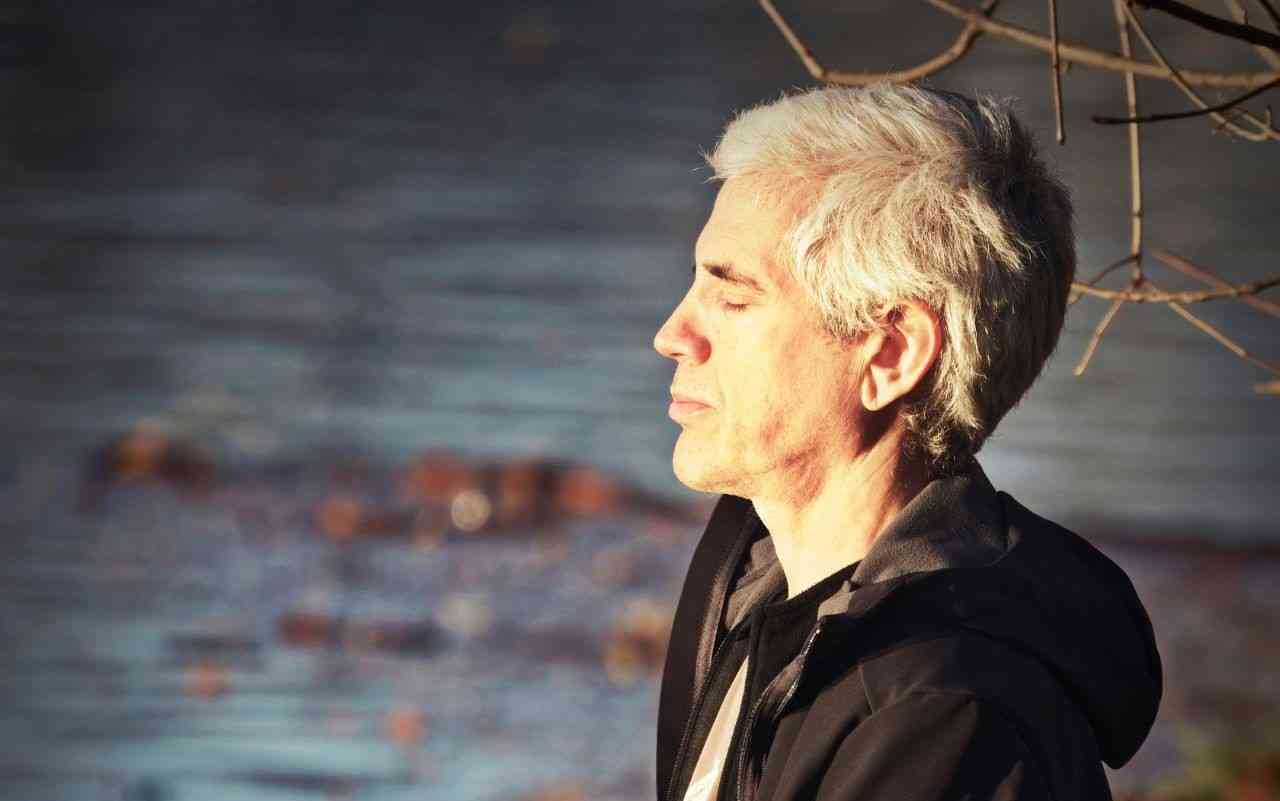
If you live with a mental health condition, developing a mindfulness practice can become a key part of your healing and wellness, along with medication and therapy.
Many people who are dealing with mental health issues experience stress and anxiety that make them feel as though they are making little progress with their condition and their lives are going nowhere. Of course, it is extremely important to keep a dialogue going about your state of mind, symptoms, and physical health with a psychiatrist and your family doctor when you are experiencing a mental illness. It is also critical that a person be able to take advantage of some of the many benefits of talk therapy. All too often, mental health consumers are given pills and some basic advice and are expected to deal with everything else on their own. There is solid evidence that therapy alone can give better results than medication alone. That does not mean people should stop their medication and go into therapy; rather, it means they should continue medication and do their best to work with a therapist they can afford and trust. However, there is another factor that can allow for even further healing. It is not a medication or therapy, it is something known as mindfulness.
One of the foundations of mindfulness is meditation, which can take many forms. Another is yoga. Studies have shown that meditation is so powerful that it can reduce depression, fatigue, and cognitive dysfunction in people with traumatic brain injuries.
Anyone wanting to learn more about mindfulness can do a Google search, scroll past the first few entries which are almost always advertisements, and learn that mindfulness is about being aware of your surroundings and living in the moment. It is a concept that became very popular in the 50s, 60s, and 70s when books like “Zen and the Art of Motorcycle Maintenance” by Robert M. Pirsig and “Dharma Bums” by Jack Kerouac came out. This was the time when Eastern religions started to grab hold in the United States, and the movement is growing to this day.
I have found a path to mindfulness that has brought me much personal clarity of mind, peace, and joy. Here are the practices that have worked well for me.
What Are the Main Forms of Mindfulness That Can Improve Your Mental Health?
There really is no right or wrong way to practice or achieve mindfulness. I have found that there are some basic elements, and I have incorporated them into daily activities that benefit me in other ways.
Breathing
The very basic element of meditation is not sitting with your legs crossed, but that can be an excellent way to begin. The basic element of mindfulness is just breathing. You find a way to center yourself, and then you focus not on what you must do tomorrow or when you will be able to pay the monthly mortgage, or what someone said to you at the checkout line that really irked you. What you do is simply breathe and be. This can be achieved by sitting meditation, walking meditation, yoga, or any activity that helps you to clear your troublesome and worrying thoughts, move your awareness outside of your own head, and regulate the most essential element of being alive, breathing.
Meditation
A few years ago, I had been fascinated with Eastern religions and started to feel like I wasn’t making progress. I loved to read books about meditation and Buddhism, whether they were written by the Dalai Lama, or Herman Hesse (I highly recommend the book “Siddhartha” by Herman Hesse as a great starting point for a lifelong journey into the world of Buddhism). There is a popular saying in Buddhism that goes, “When the student is ready, the teacher will appear.” At the time, I was seeing a nurse/therapist every two weeks who was a devoted Buddhist. When I told her I felt this stagnation in my mental clarity, she went so far as to look up a local Tibetan temple in the phone directory and gave me the address and phone number. Luckily, it was within a few blocks of where I was living. I will never forget those golden words, “Gaden Samtem Ling.” I contacted them and was invited to come down and participate in their beginner meditation class.
The meditation center was in a regular house that had been repurposed, with a shrine and pillows on the floor for sitting and a few chairs by the walls in the living room, which was now a meditation and prayer room. The teacher wore saffron robes and was a genuine Tibetan Monk. He had such a happy, playful demeanor despite his austere existence, and right away I knew he had something valuable to teach me. As I was unable to sit on the floor for very long, I was also glad for the chairs in the meditation room.
The monk, Kusho, began by teaching us that almost everyone comes into meditation practice with a “monkey mind,” meaning their focus is like a monkey running here and there, screeching, and swinging around, and that this unsettled state was the source of much unhappiness. The object of meditation was to learn to control our focus and concentration, to “tame the monkey.” This began with breathing and sitting. The method I chose was to breathe in on the count of one, out on the count of two, then breathe and count to ten and once I arrived, return to one. If at any time I noticed the “monkey mind” cutting me loose from my focus with troubling thoughts, I would simply gently return myself to one and start over. This is something that takes time and practice, and I recommend anyone wanting to go through the process to find a teacher.
Walking/Exercise Meditation
Sitting in a quiet room and trying to keep your mind clear, counting your breaths, is a great way to start. But it isn’t the only way. It is hoped that, with continued practice (not effort) and learning to control your focus, you will be able to have that sense of calm, which comes with a sense of joy — wherever you may find yourself.
At 18, I picked up a copy of “Zen and the Art of Motorcycle Maintenance” by Robert M. Pirsig, and to this day I keep a copy nearby when I want to return to a balanced state of mind, to live in the beauty of the Buddha. In the book, the author talks about how the Buddha, the founder and greatest teacher of Buddhism, exists just as much in a motorcycle engine as he does in a monastery. When I read this book, I can transport my focus to the 1970s when the author was on a motorcycle trip with his best friends and his son that took him across America. For a few paragraphs, the author would skillfully describe a ride down the highway, then suddenly launch into beautiful, descriptive explanations of philosophy and religion. I love the book not only for these scenes, but also because the author lived with a mental health disability, schizophrenia. When I first picked up this book, I no longer felt so strange, unwanted, and alone as a person with a mental illness. Then, the mindfulness and Zen part of it further transformed my life.
I went to meditation classes on and off for a few years, getting a great deal out of them. One of the first things I learned after mastering the basics of keeping my mind clear was that walking can be a form of meditation. Before I had my first major mental health breakdown, I lived in a small city and would often take walks for hours out to the country just to see the stars and clear my head. It was my way of trying to meditate, but because I had no guidance, no way of escaping my troubling thoughts and crushing depression, these walks didn’t help me as much as they could have.
Now, I try to walk for at least three miles three times a week. As I walk, I don’t listen to music or count blocks of distance. I just let myself fall into a gentle rhythm of comfortable walking and be aware of my breathing. It has become easy for me to clear my mind and focus on what is around me, rather than what may be bothering me at the time.
I have found another way to meditate, which is swimming, usually snorkeling at the pool. If possible, I pick a swimming pool that is three to four miles away, load up my gear and towel in a backpack and then let myself fall into the rhythm of walking. It is hard to describe the feeling of total joy that comes over me when I get into the swimming pool, surrounded as though in a womb in water and swim 50-meter laps until I can go no further. Part of the beauty of it is the exertion, part of it is in how the water is so clean and quiet, and the best part is how the snorkel I often use lets me listen to my breathing instead of regular fitness facility noises as I go. When I feel I have swum enough, I go into the hot tub. I like to go early in the mornings so that I run into fewer people on my walk, and so when I go to the hot tub, I can just lay back and float, drifting wherever the water jets take me as though I were an astronaut asleep in space.
I do have to keep on my guard. Sometimes even now, when I take the time for a long walk or a long swim, I will find myself dwelling on a negative thought. It isn’t totally incorrect to think about incidents in my life that I need to spend time and consideration on, like which article I am going to write next, or when I will visit my sister in Ontario. But I do try to achieve a state where, if I am thinking, I am thinking productively. Thoughts of being belittled that anger me or worries about what someone thinks of me or money or work are what I would consider unproductive thinking.
I have times when I like to keep my mind completely clear, for the greatest feelings of joy and focus, especially in the hot tub at the pool, but my goal isn’t to stop thinking completely or to separate myself from the community and world I live in. It is to make my mind and body as healthy as possible. So, when I find myself thinking negative thoughts, I take a second, notice my breathing, and put an image in my mind of something that doesn’t have any judgments or negativity attached to it. One can envision a candle burning, giving light and warmth, and equate it with the love one feels for a family member. Or one could think about a waterfall or a cool drink of clean water. The important thing is to have something to focus on that you can call upon to keep your mind away from poisonous thoughts.
The best method of all that I have found to clear my mind is to simply be aware of my surroundings. Is it cold? Is it dark? Can you see stars or the moon? How far away are they, and what does the pavement feel like as your feet move across it? Sunsets and sunrises are the best because there is so much going on in the sky and the air temperature and the clouds. When you combine this awareness of your surroundings with focused breathing, you will soon learn to stay focused enough to live better, think clearer, and feel happier.
And of Course, There Is Yoga
With all the other things I do to keep in shape, from weightlifting to riding a stationary bicycle along with walking and swimming, Yoga seemed like a natural continuation. I first was drawn to it because of being sore from other workouts as I got older. What I learned first was that stretching and doing weight-bearing exercises have to last for a long time to have a positive effect on your body. I had heard different numbers from different sources, so I found an isolated spot at the pool and did stretches I had learned in high school gym class, only holding them for as long as I could. I soon learned that there were much easier ways.
I didn’t have the confidence to join a Yoga studio, and in all honesty, I didn’t want to spend the money. Instead, I got a Yoga mat at a discount clothing store for a reasonable price and then I purchased a Yoga DVD. The DVD was very helpful, having different poses for different levels of fitness. What I loved about it was that even just after a few weeks, I noticed great improvements in my balance, which was impaired because of the medication I take for my mental illness. It also increased my flexibility and strength. Over time, I also learned that Yoga exercises can build a very attractive overall shape to a person’s body. Of course, it may be hard to find a DVD these days, or even a DVD player, but YouTube, for example, has many videos you can play to follow along with at any level.
Yoga has close ties to some of the meditation and other Eastern religious practices that I have encountered. It puts a lot of focus on breathing and emphasizes the separation of mind and body. And it is incredibly healthy for you. Again, popular Buddhist sayings that sum up the need for exercise say it in very easy-to-understand terms: “Chop wood, carry water.” This means that a person doesn’t need to spend tens of thousands on equipment, personal trainers, and gym memberships. You can simplify your life, and in that simplification, you will get the exercise you need. Food is a different matter.
Mindful Eating
Of course, any form of exercise or mindfulness can’t help you if you have a poor diet. A job change to a more sedentary one, the subsequent weight gain, and a few years of taking advantage of easy-to-cook foods caused me to develop type two diabetes in my late 40s. I went to my family doctor, and he laid out how to change my habits in very simple terms. Take your meal plate and fill half of it with vegetables, one quarter with proteins, and the last quarter with carbs. Then he said I need to do three hours of cardio a week. I followed his advice, and upped my exercise intensity and duration. Now, in total, I have been able to lose 40 pounds since my diagnosis of diabetes, and my blood sugar levels have been dropping each time I am tested.
Many people may wonder about mindfulness, meditation and Buddhist practice, and eating meat. As a person who studied under a Tibetan, I wasn’t instructed to adopt a vegetarian diet. Tibet is a country situated at higher altitudes than any other country. As a result, there are much fewer options when it comes to nutritional vegetation in Tibet. What the Tibetans believe is that it is permissible to eat beef cattle but not to eat smaller animals like snails, worms, or mice. The concept is that a cow is large, and it is one life that feeds many people many meals, while to get the same nutrition from mice, you would have to take hundreds of lives. Still, when I eat, I lean towards getting as many vegetables as I can, simply because I know the protein levels and nutritional levels of vegetarian foods are much higher than animal proteins and have far fewer harmful fats.
Mindfulness and Mental Health — Conclusion
Mental illness can be devastating, especially when the onset of the illness comes to a person at an early stage of their life. Because of the stigma of mental illness, a person can lose their friends, become estranged from their family, and feel disconnected from society, not to mention it can be very difficult to maintain employment. It is critical for a person to be honest with their caregivers and get the medication they need. It is also extremely important to go through talk therapy and work out some of the issues that may exacerbate mental illness. The question remains though, when you have the rest of your life to live and a ton of questions unanswered, where do you go from there? I feel that meditation, exercise, yoga, and mindfulness are the best ways to find balance in an unbalanced world. A psychiatrist and therapist can help fix your brain, and a family doctor may be able to help fix your body, but finding peace and joy and a centered mind can be achieved with a daily practice of mindfulness, which is just a quiet moment and a clear breath away.
Leif Gregersen is an author of fiction and non-fiction, and has published 12 books, of which 4 are poetry collections, 3 are short story collections, 2 are short novels, and 2 are memoirs of his life experience with mental illness.
Dr. Wilson graduated from Rosalind Franklin University of Medicine and Science and completed her residency in Internal Medicine at Advocate Good Shepherd Hospital in Barrington, IL. Dr. Wilson specializes in providing culturally competent and trauma-informed care to patients with physical disabilities. In addition to her private practice, she works as a science communicator, teaching health literacy to middle school and high school students in her local school district.











